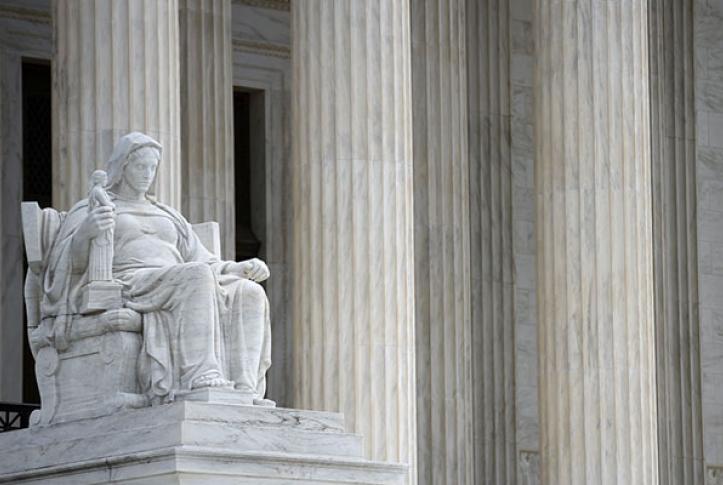On April 27, the Supreme Court announced in an 8-to-1 decision that the federal government had improperly withheld over $12 billion owed insurers in the individual and small-group markets under the Affordable Care Act’s (ACA) risk-corridor program for 2014–2016. The decision sends an important message: the government must honor its obligations. Payments will now be made to those insurers but the effect will be very different from what it would have been had the claims been paid on time.
The Risk-Corridor Program
The risk-corridor program was one of the three premium stabilization programs established by the ACA. Recognizing that insurers were taking on a considerable risk by marketing products eligible to all at the same premiums, regardless of health status, and without preexisting condition exclusions, the risk-corridor program promised insurers that the government would share in excess losses and profits for the first three years of the new market. Not surprisingly, given the unpredictability of the new product and some policy decisions made at the time, excess losses greatly exceeded profits by more than $12.2 billion over the three years.
Insurers set their premiums for 2014 and 2015 relying on the promise of the risk-corridor statute and reassuring statements from the U.S. Department of Health and Human Services (HHS) that the government would share their losses. Late in 2014, however, Congress adopted as part of its budget process an appropriations rider that prohibited HHS from using certain funds to supplement risk-corridor payments, effectively limiting payments through the program to money it collected from profitable insurers.
The Decision
Insurers filed over 50 lawsuits in the Court of Federal Claims, including a class action involving about 150 insurers. The Federal Circuit, which hears appeals from the Court of Federal Claims, ruled against the insurers in a split decision. The Supreme Court decision, reversing the Federal Circuit and ruling for the insurers, was written by Justice Sonia Sotomayor. It held that the ACA created a mandatory obligation to make full risk-corridor payments and the appropriations amendment did not repeal this obligation. Only Justice Alito dissented from this result. The Court based its decision on “a principle as old as the Nation itself: The Government should honor its obligations.”
The Effects of the Risk-Corridor Payment Cut-Offs
The problem, however, is that the government failed to honor its obligations for losses incurred in 2014, 2015, and 2016. That failure had dramatic consequences that cannot be remedied by payments made now. For example, the lack of risk-corridor payments played a decisive role in the 2015 failure of eight consumer operated and oriented plans (CO-OPs) created by the ACA, and was a major factor in the demise of several others. The CO-OP program had been included in the ACA in lieu of a public option to give consumers an alternative to traditional insurers. It never reached its envisioned potential, but by 2015, 22 CO-OPs had 1 million enrollees. The CO-OPs faced a host of problems: cuts in funding, restrictive regulations, sicker-than-expected enrollees, lack of management expertise, a risk-adjustment program that disadvantaged them against larger insurers, and either too many or too few enrollees.
The failure of the risk-corridor payments, however, was a bridge too far — only 12 CO-OPs survived 2015 and most of the rest closed in the next two years. Only four are operating in 2020. Many of the failed CO-OPs (and some other small insurers) went into receivership, with their assets and liabilities taken over by state guaranty funds, which will presumably now collect their risk-corridor claims.
The biggest risk-corridor payments were owed to large insurers, particularly Blue Cross and Blue Shield Plans. More than $1 billion was owed to Texas Blue Cross/Blue Shield and $2 billion to Health Care Service Corp. plans alone. Some large commercial insurance plans that were owed payments left the ACA market or cut back their participation.
The financial problems caused by the loss of these payments, as well as the decline in market competition from insurers failing or leaving markets, likely contributed to premium increases in following years. One study concluded that “in the absence of the risk-corridor program ending, premiums would have risen by only 10 percent between 2015 and 2017, instead of the actual 37 percent we observe.” Premium increases for 2017 led in turn to reduced enrollment in the individual market.
What Happens Now?
Disbursing the risk-corridor payments now that were previously denied cannot repair the damage done to the CO-OPs or to the individual market generally. Much of the payout may go to insurers that no longer have a significant presence in the individual or small-group market, to state guaranty funds, or to private investors that bought up the claims of insurers for a fraction of their value.
The payout may not benefit consumers much. Premiums going forward are determined generally on projected claims and expenses for a coverage year and are not normally influenced by recoveries of insurers’ past debts.
It is possible that some of the funds will be paid out to enrollees under the ACA’s medical loss ratio requirement (MLR), which requires insurers to pay rebates to enrollees when claims and quality improvement expenses for a given year are less than 80 percent of premium revenues, including risk-corridor payments. The rules are complicated, and possibly subject to change, but insurers that receive large payments may have to share some of the money with their current enrollees over a three-year period. Some insurers might reduce premiums to cut rebates. In any event, many of the people who receive MLR rebates or reduced premiums will not be the enrollees who earlier suffered loss of their insurers or increased premiums.
The most important ramification of the decision, however, is the message it sends to private entities that partner with the government to provide vital services in health care and elsewhere. The government cannot simply avoid paying these organizations by failing to appropriate funds. The government must honor its obligations — eventually.




